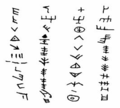In philology, decipherment is the discovery of the meaning of texts written in ancient or obscure languages or scripts.

Writing is the act of creating a persistent representation of human language. A writing system uses a set of symbols and rules to encode aspects of spoken language, such as its lexicon and syntax. However, written language may take on characteristics distinct from those of any spoken language.
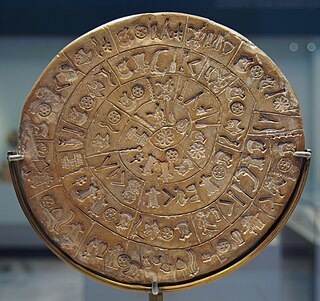
The Phaistos Disc or Phaistos Disk is a disk of fired clay from the island of Crete, Greece, possibly from the middle or late Minoan Bronze Age, bearing a text in an unknown script and language. Its purpose and its original place of manufacture remain disputed. It is now on display at the archaeological museum of Heraklion. The name is sometimes spelled Phaestos or Festos.

Cuneiform is a logo-syllabic writing system that was used to write several languages of the Ancient Near East. The script was in active use from the early Bronze Age until the beginning of the Common Era. Cuneiform scripts are marked by and named for the characteristic wedge-shaped impressions which form their signs. Cuneiform is the earliest known writing system and was originally developed to write the Sumerian language of southern Mesopotamia.

The Vinča symbols or Vinča–Turdaș signs, Old European script, Danube script are a set of untranslated symbols found on Neolithic era artifacts from the Vinča culture and other related "Old European" cultures of Central and Southeastern Europe. Whether this is one of the earliest writing systems or simply symbols of some sort is disputed. They have sometimes been described as an example of proto-writing. The symbols went out of use around 3,500 BC.

Mesoamerican languages are the languages indigenous to the Mesoamerican cultural area, which covers southern Mexico, all of Guatemala, Belize, El Salvador, and parts of Honduras, Nicaragua and Costa Rica. The area is characterized by extensive linguistic diversity containing several hundred different languages and seven major language families. Mesoamerica is also an area of high linguistic diffusion in that long-term interaction among speakers of different languages through several millennia has resulted in the convergence of certain linguistic traits across disparate language families. The Mesoamerican sprachbund is commonly referred to as the Mesoamerican Linguistic Area.
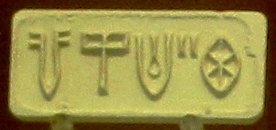
The Indus script, also known as the Harappan script and the Indus Valley Script, is a corpus of symbols produced by the Indus Valley Civilisation. Most inscriptions containing these symbols are extremely short, making it difficult to judge whether or not they constituted a writing system used to record a Harappan language, any of which are yet to be identified. Despite many attempts, the "script" has not yet been deciphered, but efforts are ongoing. There is no known bilingual inscription to help decipher the script, which shows no significant changes over time. However, some of the syntax varies depending upon location.

Proto-writing consists of visible marks communicating limited information. Such systems emerged from earlier traditions of symbol systems in the early Neolithic, as early as the 7th millennium BC in China and southeastern Europe. They used ideographic or early mnemonic symbols or both to represent a limited number of concepts, in contrast to true writing systems, which record the language of the writer.
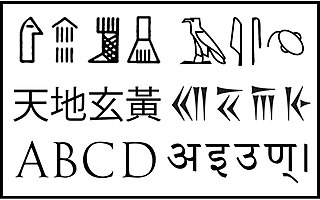
The history of writing traces the development of writing systems and how their use transformed and was transformed by different societies. The use of writing prefigures various social and psychological consequences associated with literacy and literary culture.

The Isthmian script is an early set of symbols found in inscriptions around the Isthmus of Tehuantepec, dating to c. 500 BCE – 500 CE, though with dates subject to disagreement. It is also called the La Mojarra script and the Epi-Olmec script.
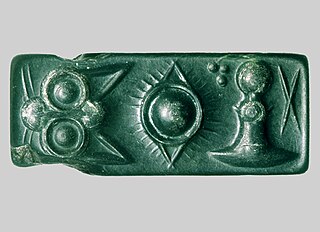
Cretan hieroglyphs are a hieroglyphic writing system used in early Bronze Age Crete, during the Minoan era. They predate Linear A by about a century, but the two writing systems continued to be used in parallel for most of their history. As of 2024, they are undeciphered.

The Byblos script, also known as the Byblos syllabary, Pseudo-hieroglyphic script, Proto-Byblian, Proto-Byblic, or Byblic, is an undeciphered writing system, known from ten inscriptions found in Byblos, a coastal city in Lebanon. The inscriptions are engraved on bronze plates and spatulas, and carved in stone. They were excavated by Maurice Dunand, from 1928 to 1932, and published in 1945 in his monograph Byblia Grammata. The inscriptions are conventionally dated to the second millennium BC, probably between the 18th and 15th centuries BC.
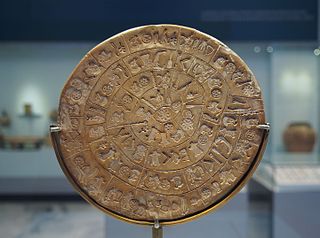
Many people have claimed to have deciphered the Phaistos Disc.
Aegean script or Cretan script refers to a group of scripts that originate from the island of Crete. It may also refer to:
Mesoamerica, along with Mesopotamia and China, is one of three known places in the world where writing is thought to have developed independently. Mesoamerican scripts deciphered to date are a combination of logographic and syllabic systems. They are often called hieroglyphs due to the iconic shapes of many of the glyphs, a pattern superficially similar to Egyptian hieroglyphs. Fifteen distinct writing systems have been identified in pre-Columbian Mesoamerica, many from a single inscription. The limits of archaeological dating methods make it difficult to establish which was the earliest and hence the progenitor from which the others developed. The best documented and deciphered Mesoamerican writing system, and the most widely known, is the classic Maya script. Earlier scripts with poorer and varying levels of decipherment include the Olmec hieroglyphs, the Zapotec script, and the Isthmian script, all of which date back to the 1st millennium BC. An extensive Mesoamerican literature has been conserved, partly in indigenous scripts and partly in postconquest transcriptions in the Latin script.
The Aztec or Nahuatl script is a pre-Columbian writing system that combines ideographic writing with Nahuatl specific phonetic logograms and syllabic signs which was used in central Mexico by the Nahua people.
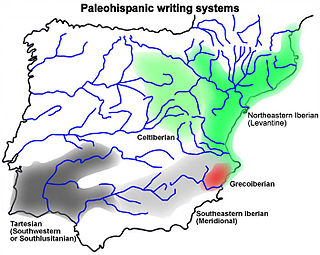
The northeastern Iberian script, also known as Levantine Iberian or Iberian, was the main means of written expression of the Iberian language, but has also been used to write Proto-Basque as seen in the Hand of Irulegi. The Iberian language is also expressed by the southeastern Iberian script and the Greco-Iberian alphabet. To understand the relationship between northeastern Iberian and southeastern Iberian scripts, one should point out that they are two different scripts with different values for the same signs. However, it is clear they have a common origin and the most accepted hypothesis is that northeastern Iberian script was derived from the southeastern Iberian script. Some researchers have concluded that it is linked to the Phoenician alphabet alone, but others believe the Greek alphabet also had a role.
Olmec hieroglyphs are a set of glyphs developed within the Olmec culture. The Olmecs were the earliest known major Mesoamerican civilization, flourishing during the formative period in the tropical lowlands of the modern-day Mexican states of Veracruz and Tabasco. The subsequent Epi-Olmec culture, was a successor culture to the Olmec and featured the Isthmian script, which has been characterized as a full-fledged writing system, though with its partial decipherment being disputed.

A writing system comprises a particular set of symbols, called a script, as well as the rules by which the script represents a particular language. Writing systems can generally be classified according to how symbols function according to these rules, with the most common types being alphabets, syllabaries, and logographies. Alphabets use symbols called letters that correspond to spoken phonemes. Abjads generally only have letters for consonants, while pure alphabets have letters for both consonants and vowels. Abugidas use characters that correspond to consonant–vowel pairs. Syllabaries use symbols called syllabograms to represent syllables or moras. Logographies use characters that represent semantic units, such as words or morphemes.





